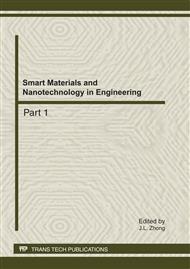p.355
p.361
p.365
p.370
p.375
p.381
p.387
p.393
p.399
Improvement of Vindoline Production in a Catharanthus roseus callus Line
Abstract:
The influence of polyploidity on the accumulation of vindoline in Catharanthus roseus callus cultures was investigated. The callus line (T1) was induced from a tetraploid leaf. Total alkaloids in the callus were extracted and analyzed by LC-MS for qualitification and HPLC for quantification. Results showed that T1 callus cultures could accumulate vindoline to a high level. The highest accumulation of vindoline found in the callus was 0.11 mg g−1 DW. Our results demonstrate that polyploidity could influence the chlorophyll content or chloroplast development and improve vindoline biosynthesis in callus cultures. The T1 callus cultures also accumulated a substance which was not present in the diploid callus. The substance was preliminarily identified by LC-MS as deacetylvindoline, the direct precursor of vindoline biosynthesis. T1 callus could be used for genetic manipulation of the biosynthesis of vinblastine and vincristine, the two important antitumor drugs, and therefore, have potential commercial value.
Info:
Periodical:
Pages:
375-380
Citation:
Online since:
September 2011
Authors:
Keywords:
Price:
Сopyright:
© 2012 Trans Tech Publications Ltd. All Rights Reserved
Share:
Citation:


